Resources
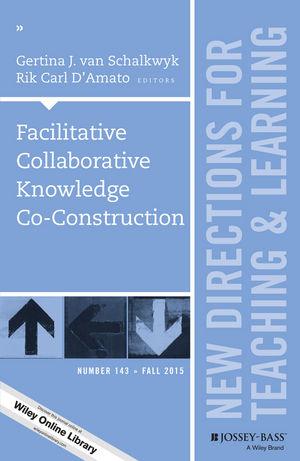
Click Here for Book Review Abstract: Collaborative teaching and learning has been a focus of research recently, yet it can sometimes be a challenge for multicultural students in an educational setting. This second volume of a two-volume edition helps lecturers, educators, and teachers create collaborative teaching and learning experiences with multicultural adult learners in higher education. The authors of this volume provide: - outlines of some of the positive relationships that can be developed among students and educators when the process of gaining knowledge is seen as a co-constructed process, - approaches to relational intelligence and collaborative learning, - research from neuropsychology and practical applications to teaching, and - characterizations of emotional intelligence and sociocognitive skills needed in collaborative learning environments. Though focused on Asian students and their experiences, this volume includes information for all students and educators who are engaged in the collaborative search for knowledge. This is the 143rd volume of this Jossey-Bass higher education series. It offers a comprehensive range of ideas and techniques for improving college teaching based on the experience of seasoned instructors and the latest findings of educational and psychological researchers. (From the Publisher)
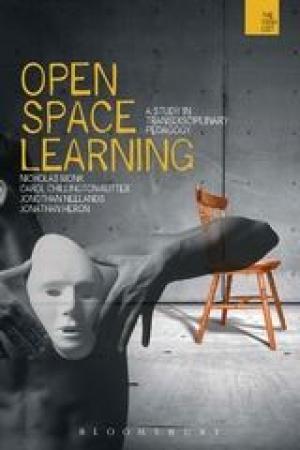
Click Here for Book Review> Abstract: Open-space Learning offers a unique resource to educators wishing to develop a workshop model of teaching and learning. The authors propose an embodied, performative mode of learning that challenges the primacy of the lecture and seminar model in higher education. Drawing on the expertise of the CAPITAL Centre (Creativity and Performance in Teaching and Learning) at the University of Warwick, they show how pedagogic techniques developed from the theatrical rehearsal room may be applied effectively across a wide range of disciplines. The book offers rich case-study materials, supplemented by video and documentary resources, available to readers electronically. These practical elements are supplemented by a discursive strand, which draws on the methods of thinkers such as Freire, Vygotsky and Kolb, to develop a formal theory around the notion of Open-space Learning. (From the Publisher)
Annotating a text can be a powerful strategy to comprehend difficult material and encourage active reading. High school teacher Carol Porter-O’Donnell provides several activities and tools to help students learn to purposefully mark up what they read.
An overview of research in cognitive psychology, linguistics, and teaching science. 1) note taking strategies used by students; 2) the different factors involved in comprehension through note taking; 3) “writing to learn”; 4) the learning contexts that allow effective note taking.
Reviews research on the impact of notetaking and how the review of notes affects student learning. The paper also explores the role that instructors can play, suggesting several specific strategies to support students. 
Short, accessible, review of several recent studies showing that lectures are a pedagogical technique that “favor some people while discriminating against others, including women, minorities and low-income and first-generation college students.” All the more reason for adopting active learning strategies that have proved to be more effective for ALL learners.
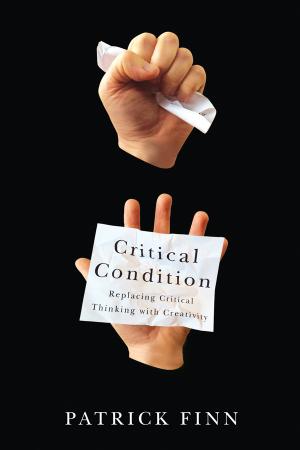
Should we stop teaching critical thinking? Meant as a prompt to further discussion, Critical Condition questions the assumption that every student should be turned into a “critical thinker.” The book starts with the pre-Socratics and the impact that Socrates’ death had on his student Plato and traces the increasingly violent use of critical “attack” on a perceived opponent. From the Roman militarization of debate to the medieval Church’s use of defence as a means of forcing confession and submission, the early phases of critical thinking were bound up in a type of attack that Finn suggests does not best serve intellectual inquiry. Recent developments have seen critical thinking become an ideology rather than a critical practice, with levels of debate devolving to the point where most debate becomes ad hominem. Far from arguing that we abandon critical inquiry, the author suggests that we emphasize a more open, loving system of engagement that is not only less inherently violent but also more robust when dealing with vastly more complex networks of information. This book challenges long-held beliefs about the benefits of critical thinking, which is shown to be far too linear to deal with the twenty-first century world. Critical Condition is a call to action unlike any other. (From the Publisher)
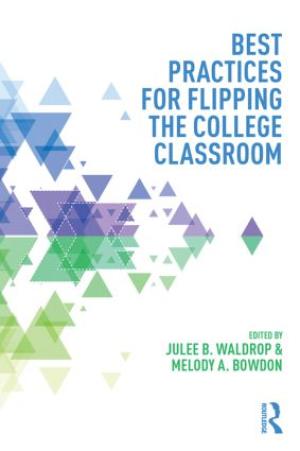
Click Here for Book Review Abstract: Best Practices for Flipping the College Classroom provides a comprehensive overview and systematic assessment of the flipped classroom methodology in higher education. The book: • Reviews various pedagogical theories that inform flipped classroom practice and provides a brief history from its inception in K–12 to its implementation in higher education. • Offers well-developed and instructive case studies chronicling the implementation of flipped strategies across a broad spectrum of academic disciplines, physical environments, and student populations. • Provides insights and suggestions to instructors in higher education for the implementation of flipped strategies in their own courses by offering reflections on learning outcomes and student success in flipped classrooms compared with those employing more traditional models and by describing relevant technologies. • Discusses observations and analyses of student perceptions of flipping the classroom as well as student practices and behaviors particular to flipped classroom models. • Illuminates several research models and approaches for use and modification by teacher-scholars interested in building on this research on their own campuses. The evidence presented on the flipped classroom methodology by its supporters and detractors at all levels has thus far been almost entirely anecdotal or otherwise unreliable. Best Practices for Flipping the College Classroomis the first book to provide faculty members nuanced qualitative and quantitative evidence that both supports and challenges the value of flipping the college classroom. (From the Publisher)
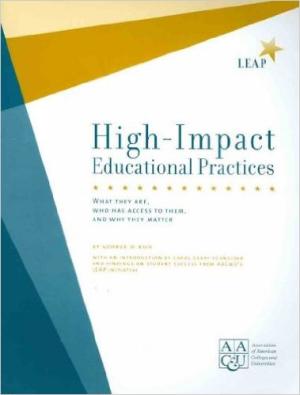
High-Impact Educational Practices: A Brief Overview The following teaching and learning practices have been widely tested and have been shown to be beneficial for college students from many backgrounds. These practices take many different forms, depending on learner characteristics and on institutional priorities and contexts. On many campuses, assessment of student involvement in active learning practices such as these has made it possible to assess the practices’ contribution to students’ cumulative learning. However, on almost all campuses, utilization of active learning practices is unsystematic, to the detriment of student learning. Presented below are brief descriptions of high-impact practices that educational research suggests increase rates of student retention and student engagement. The rest of this publication will explore in more detail why these types of practices are effective, which students have access to them, and, finally, what effect they might have on different cohorts of students. First-Year Seminars and Experiences
Many schools now build into the curriculum first-year seminars or other programs that bring small groups of students together with faculty or staff on a regular basis. The highest-quality first-year experiences place a strong emphasis on critical inquiry, frequent writing, information literacy, collaborative learning, and other skills that develop students’ intellectual and practical competencies. First-year seminars can also involve students with cutting-edge questions in scholarship and with faculty members’ own research. Common Intellectual Experiences
The older idea of a “core” curriculum has evolved into a variety of modern forms, such as a set of required common courses or a vertically organized general education program that includes advanced integrative studies and/or required participation in a learning community. These programs often combine broad themes—e.g., technology and society, global interdependence—with a variety of curricular and cocurricular options for students. Learning Communities
The key goals for learning communities are to encourage integration of learning across courses and to involve students with “big questions” that matter beyond the classroom. Students take two or more linked courses as a group and work closely with one another and with their professors. Many learning communities explore a common topic and/or common readings through the lenses of different disciplines. Some deliberately link “liberal arts” and “professional courses”; others feature service learning. Writing-Intensive Courses
These courses emphasize writing at all levels of instruction and across the curriculum, including final-year projects. Students are encouraged to produce and revise various forms of writing for different audiences in different disciplines. The effectiveness of this repeated practice “across the curriculum” has led to parallel efforts in such areas as quantitative reasoning, oral communication, information literacy, and, on some campuses, ethical inquiry. Collaborative Assignments and Projects
Collaborative learning combines two key goals: learning to work and solve problems in the company of others, and sharpening one’s own understanding by listening seriously to the insights of others, especially those with different backgrounds and life experiences. Approaches range from study groups within a course, to team-based assignments and writing, to cooperative projects and research. Undergraduate Research
Many colleges and universities are now providing research experiences for students in all disciplines. Undergraduate research, however, has been most prominently used in science disciplines. With strong support from the National Science Foundation and the research community, scientists are reshaping their courses to connect key concepts and questions with students’ early and active involvement in systematic investigation and research. The goal is to involve students with actively contested questions, empirical observation, cutting-edge technologies, and the sense of excitement that comes from working to answer important questions. Diversity/Global Learning
Many colleges and universities now emphasize courses and programs that help students explore cultures, life experiences, and worldviews different from their own. These studies—which may address U.S. diversity, world cultures, or both—often explore “difficult differences” such as racial, ethnic, and gender inequality, or continuing struggles around the globe for human rights, freedom, and power. Frequently, intercultural studies are augmented by experiential learning in the community and/or by study abroad. Service Learning, Community-Based Learning
In these programs, field-based “experiential learning” with community partners is an instructional strategy—and often a required part of the course. The idea is to give students direct experience with issues they are studying in the curriculum and with ongoing efforts to analyze and solve problems in the community. A key element in these programs is the opportunity students have to both apply what they are learning in real-world settings and reflect in a classroom setting on their service experiences. These programs model the idea that giving something back to the community is an important college outcome, and that working with community partners is good preparation for citizenship, work, and life. Internships
Internships are another increasingly common form of experiential learning. The idea is to provide students with direct experience in a work setting—usually related to their career interests—and to give them the benefit of supervision and coaching from professionals in the field. If the internship is taken for course credit, students complete a project or paper that is approved by a faculty member. Capstone Courses and Projects
Whether they’re called “senior capstones” or some other name, these culminating experiences require students nearing the end of their college years to create a project of some sort that integrates and applies what they’ve learned. The project might be a research paper, a performance, a portfolio of “best work,” or an exhibit of artwork. Capstones are offered both in departmental programs and, increasingly, in general education as well. (From the Publisher)
The Association of American Colleges & Universities (AAC&U) website linking to a flyer describing10 teaching and learning practices that have been widely tested and been shown to be beneficial for college students from many backgrounds, especially historically underserved students, who often do not have equitable access to high-impact learning.